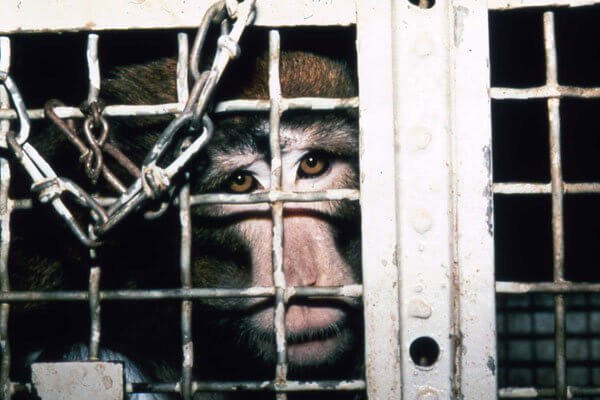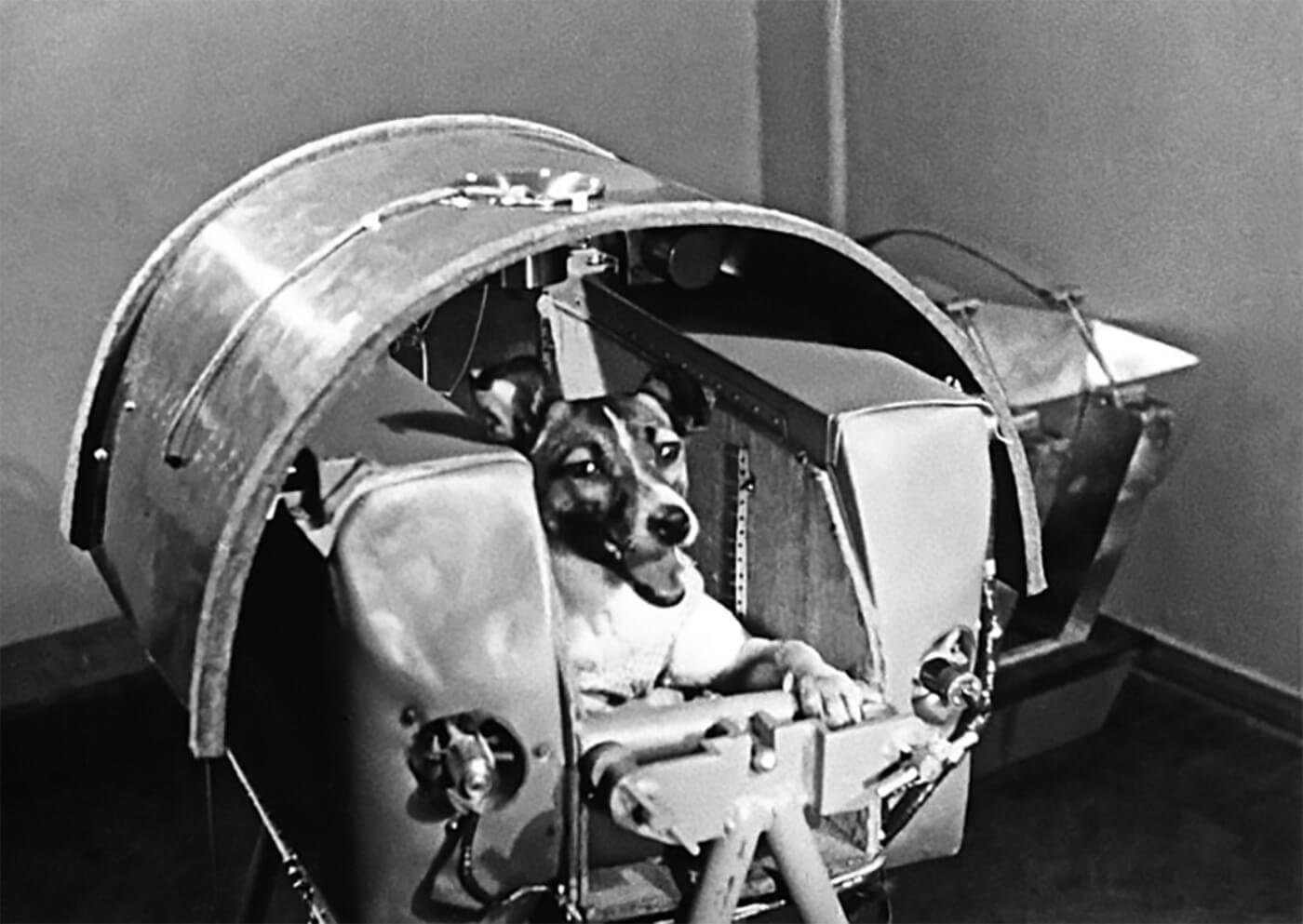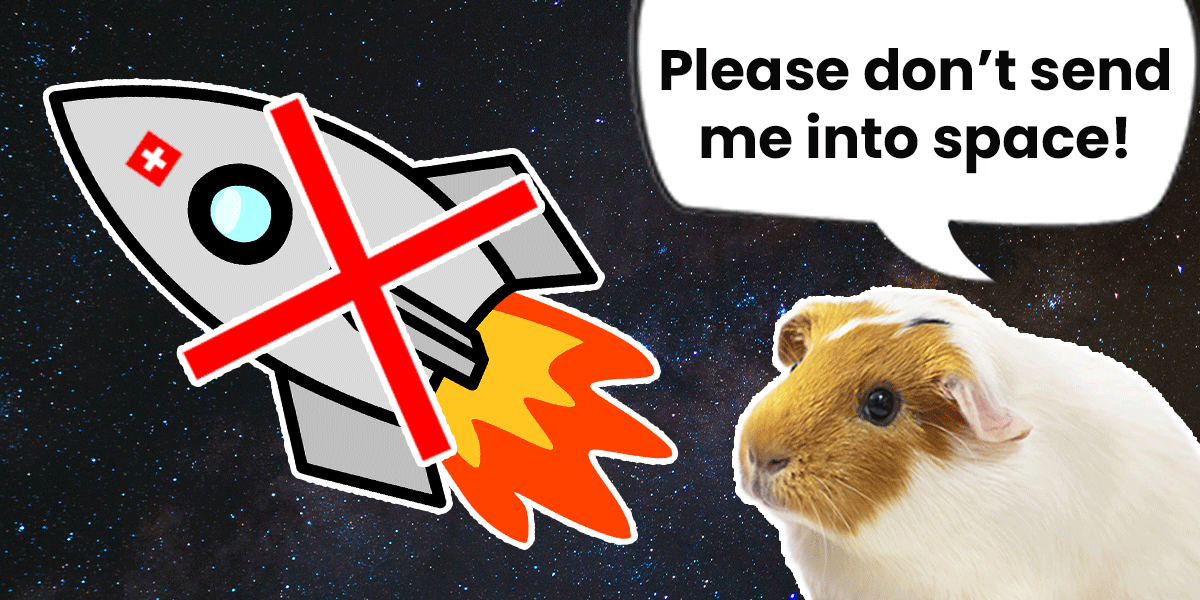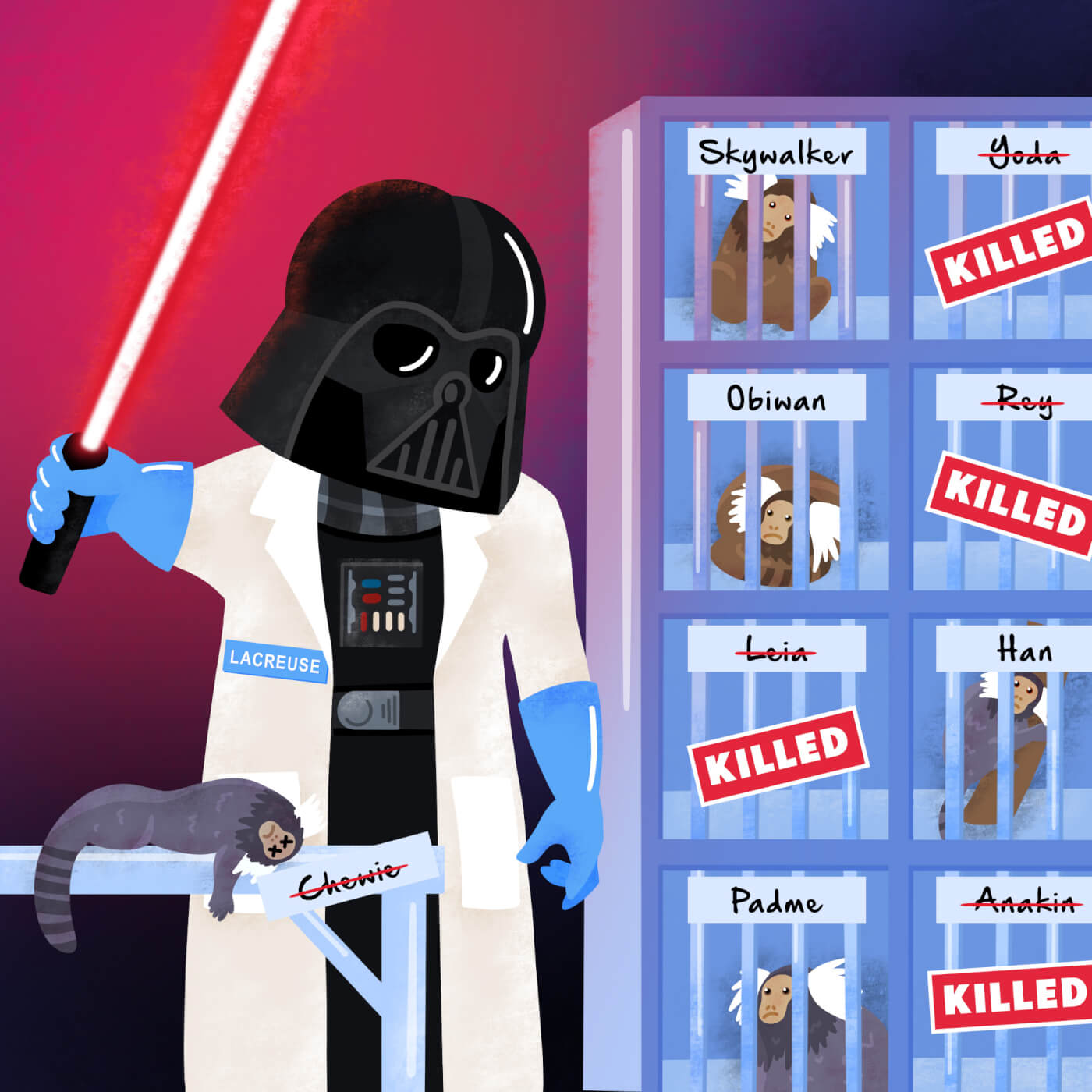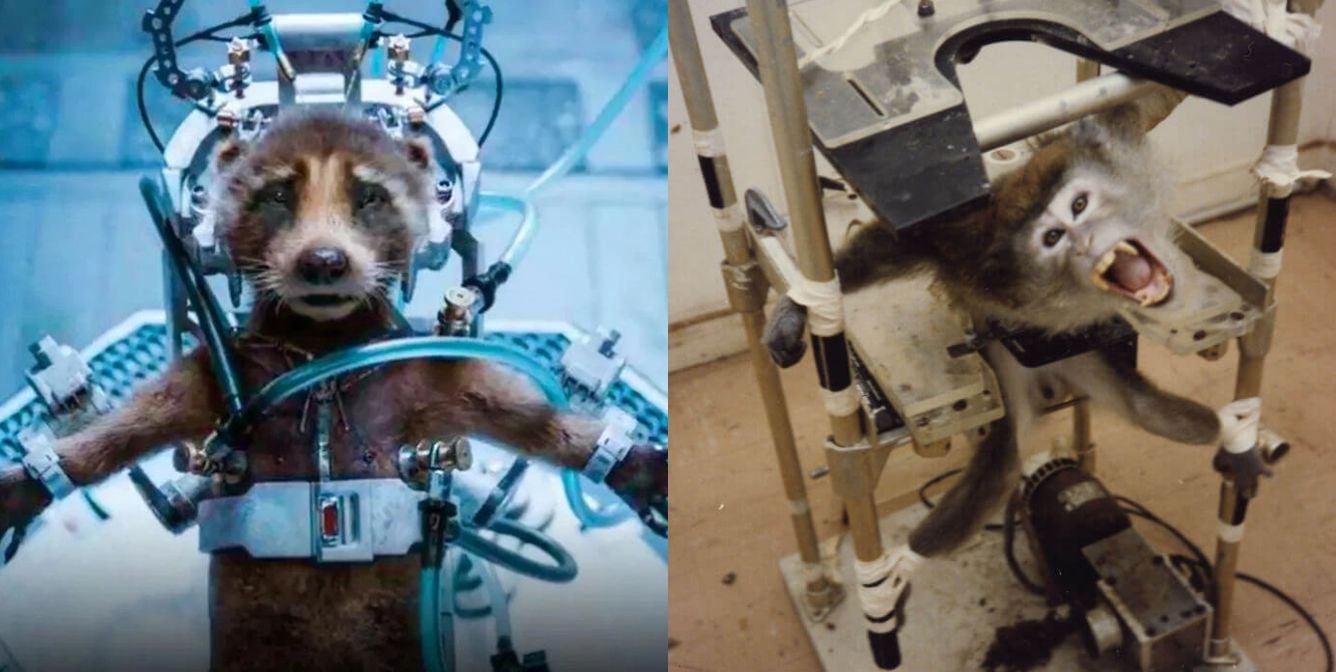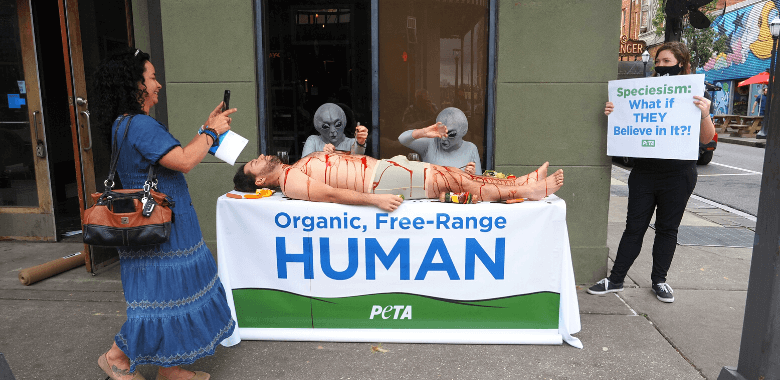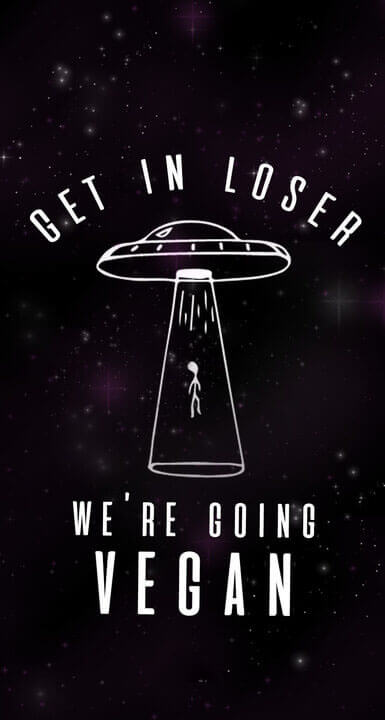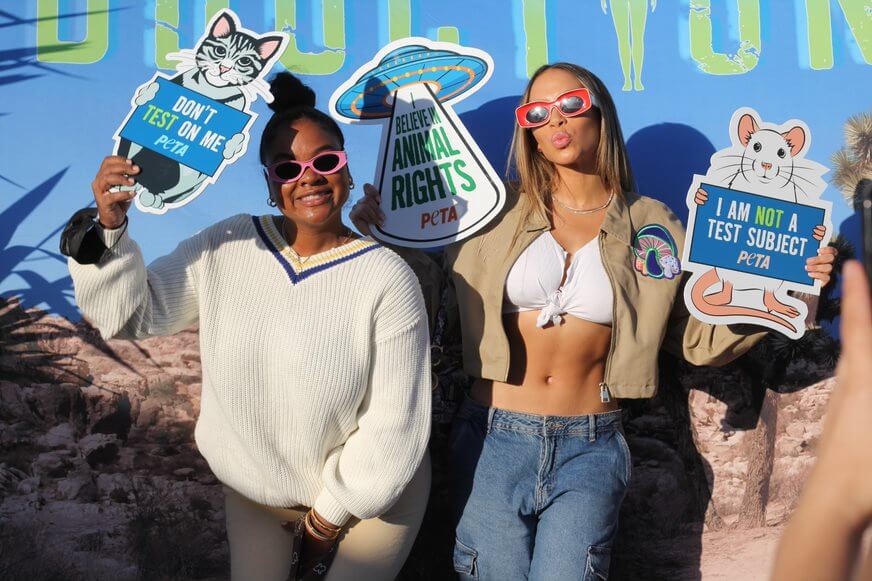Is There a ‘Dark Side’ to PETA? Board Our Starship to Shine Light on a Rebel Force
Determined to discover a “dark side” of PETA? Hold on tight to your lightsaber! The shadowy voyage to the truth may surprise you—and even involves space flight and time travel.
Not So Long Ago in Our Galaxy, a ‘Dark Side’ Took Flight
Buuuuuut it’s not quite the dark side you’d expect. First, let’s leap back in time through PETA’s many milestones to 1981: Poof! As we board PETA’s starship to explore those earliest days, one thing is certain: It’s not launching from a “Death Star”—it’s soaring toward one in the hope that animals’ lives could be spared.
Still, a clever “cloak of darkness” helps the budding organization go undercover to investigate the use and abuse of monkeys for vivisection at a laboratory in Silver Spring, Maryland. We observe as this leads to the first-ever criminal conviction of a U.S. experimenter on cruelty-to-animals charges. Rather than hiding anything in shadow, PETA aims to illuminate.
Suddenly, it’s clear: PETA’s “dark side” is, in fact, a kind of “Rebel Alliance” bent on ending the “Galactic Empire” of speciesism and its use of animals for experimentation, food, clothing, entertainment, or any other human purpose. Shining an animal rights lightsaber on the dark corners of exploitative industries—starting at Silver Spring, Maryland, over 40 years ago—is PETA’s intent, and “the Force” of compassion compels the organization’s witty campaigns forward.
From here, we blast through multiple “meteor showers” of PETA’s efforts to spare animals used in vivisection often funded by unaware taxpayers through the National Institutes of Health (NIH). We view whistleblowers and PETA’s undercover investigators witnessing—often for weeks or months on end—egregious abuse of animals in laboratories, leading to litigation to stop it. Far from displaying a typical dark side, PETA’s practically glowing like the twin suns of Tatooine by giving animals a chance at better lives.
Zooming through the years, we slow our pace to pass into PETA’s work to end tests on dogs, guinea pigs, monkeys, and other animals for space travel.
Reflecting on the tragic death of the dog Laika on Sputnik 2, we learn how PETA got NASA’s plan to irradiate monkeys scrapped. Humans in the present day can help animals forced into experiments by supporting our Research Modernization Deal.
Next, we observe Star Wars sequel trilogy actor Daisy Ridley take a strong stand for the marmosets being exploited and killed in cruel experiments at the University of Massachusetts–Amherst (UMass).
Gliding up to PETA’s current campaign to end cruel, wasteful monkey fright tests, we watch NIH experimenter Elisabeth Murray suck out or burn parts of monkeys’ brains, confine the animals to a metal box, and then terrorize them with realistic-looking rubber snakes and spiders. Is it just us, or does she sound like a close cousin of Jabba the Hutt, who favors torturing captive individuals over showing kindness?
Since PETA supporters have done all they can over the years to be guardians of animals in these ways, it’s very encouraging that there’s a similar anti-vivisection theme in the recent film Guardians of the Galaxy Vol. 3.
‘Spar Wars’: Dispelling Doubts Over PETA’s ‘Dark Side’
PETA is working tirelessly against the speciesist “dark side,” despite any Spar Wars that persist. But in case some doubts linger after that main leg of our voyage, let’s fly a bit longer to dissipate them with a few more strong examples of what PETA’s up against:
- The egg industry’s dark side hides quite the list of things it doesn’t want you to know. For the sake of baby male chicks killed on their first day of life and exploited hens, eat only vegan eggs.
- Circuses and roadside zoos that still exploit and abuse animals for entertainment have a dark side that must end. Many circuses have gone animal-free, but some—like Carden International Circus—still engage in human supremacism.
- The pet trade contributes greatly to the companion animal overpopulation crisis, and misleadingly named organizations—like National Mill Dog Rescue—can have a dark side by “flipping” animals for profit. And while we’re on the topic, we can’t leave out PETA’s love for the late Carrie Fisher (Princess Leia in Star Wars) and her devotion to dogs.
*****
Now that any “shroud of the [real] dark side has fallen,” we hope you’ll feel like a Jedi when you willingly hop aboard again soon for an enlightening mode of “abduction”—like our virtual-reality experience touring U.S. campuses. Next time, we may even glide by Disneyland’s Star Wars: Galaxy’s Edge—which earned PETA’s Vegan Superstar Award in honor of the 40th anniversary of Return of the Jedi—for stellar treats.
This concludes your first galactic tour. PETA thanks you for joining and urges you to stay tuned and get active—starting below as you alight from the starship.
How to Summon Your Inner ‘Yoda’ to Help Animals
With the “Empire” of speciesism constantly striking back, PETA relies on you as a supporter to summon your inner Yoda and take action for animals. Now that you’ve flown through time and space to get a glimpse of what PETA’s actually up to, take a few moments to help our “Rebel Alliance” achieve more victories by telling UMass to stop cruel testing on marmosets:


